Get rid of rust on garden and indoor plants
Rust is a common fungal infection of plant organisms. Disease-causing fungi can parasitize a huge number of species: trees, vegetables, flowers, crops are affected. Rust is also a threat to indoor plants. The fight against this infection is carried out with the help of fungicidal preparations. We must not forget about disease prevention.
Symptoms and causes of the disease
Rust fungus is easy to recognize even in the early stages of its development. The symptoms of this disease are quite specific, they cannot be confused with signs of other diseases:
- the leaves and stems of the infected plant are covered with yellowish or reddish-brown raised spots, which can be of any size and shape;
- the specks quickly increase in size and turn into pustules - cavities filled with fungal spores;
- leaves begin to wilt as a result of dehydration;
- a little later, the pustules burst, after which the spores, once in the air, quickly settle on neighboring plants.
The severity of rust is quite high. With severe damage, leaves fall off, which impairs the processes of photosynthesis. The plant begins to weaken, its yield and winter hardiness deteriorate, new shoots cease to form, metabolism is disrupted. Without treatment, the fungus gradually covers the entire vegetative part. The result can be the death of the plant.
The causes of the disease lie in unsuitable growing conditions:
- The appearance of rust in indoor flowers is provoked by excessive humidity in the air and soil, as well as inadequate lighting. In such conditions, plants are stressed, weakened and easily sick.
- In garden plants, everything happens in a similar way - the disease develops in conditions of waterlogging.
The spores of the rust-causing fungus are very small and are easily carried by the wind over long distances. Plants are especially susceptible to disease, forced to survive in unsuitable conditions for them, with a gross violation of agricultural technology.
Rust of cereals
The disease can occur on all crops, affecting stems, leaves, ears, and even grain. Depending on the stage of the disease, pustules can have a different color - from orange to black. The causative agent of cereal rust is the basidiomycete Uredinales (several related groups).
The development of a fungal infection largely depends on weather conditions (humidity, temperature, rainfall) and compliance with agricultural practices. Infection of crops can occur at any stage of the growing season. The affected stems break and lie down. Diseased plants are capable of producing only defective grains, which significantly impairs yield indicators.
Rust in cereals has several varieties, caused by related fungi. Linear or stem rust is most common, affecting 280 species of cereal plants.
The disease inflicts the greatest damage on the territory of Russia in the regions of the Far East and the North Caucasus.
The fungus overwinters in various ways, most often in the form of telithospores, which begin to germinate in spring when warm weather sets in.
The measures to combat rust of cereals mainly include agrotechnical methods. In affected areas, it is necessary to carry out early fall plowing, to destroy weeds and a culture-reserve - barberry.
In case of an outbreak of the disease, crops are treated with one of the following drugs:
- Altrum Super;
- "Avakss";
- "Acanto Plus"
- Atlant
- "Altazol"
- Alpari.
The dosage of fungicides depends on the crop grown. All the necessary information is indicated in the instructions for the preparations.
Houseplant rust
House flowers are rarely affected by rust, but the disease threatens them with serious danger. If the necessary measures are not taken, the infected flower may die. Simultaneously with the treatment, it is imperative to adjust the conditions in which the plant lives.
Rust can threaten all flowers, but most often it can be seen on the leaves:
- orchids;
- pelargonium;
- camellias;
- fuchsia;
- cyclamen;
- chrysanthemums;
- roses.
Paying attention to the content of flowers is especially necessary in winter. At this time of the year, many plants go dormant, which means they need a minimum amount of moisture. It is especially dangerous to flood a flower standing near a radiator.
Rust can appear on the leaves of indoor plants and as a result of the abuse of fertilizing, especially nitrogen.
In summer, flowers that are taken out into the garden, on the terrace or balcony are at risk. In outdoor conditions, spores can easily enter plants through gusts of wind or insects.
For the purpose of prophylaxis in the spring, it is recommended to treat indoor plants with a 1% solution of Bordeaux mixture and keep them in suitable conditions. If any of the plants is sick, it is transferred to a separate room, all diseased leaves are cut off and destroyed, and then treated with drugs:
- "Topaz" (4 ml per 10 liters of water);
- "Abika-Peak" (60 g per 10 liters of water);
- "Baktofit" (1 ml per 1 liter of water).
You can dust with sulfuric dust. The room must be regularly ventilated to maintain the optimum humidity level. Watering is temporarily reduced. It is advisable to humidify through a pan so that water does not get on the flowers and leaves. After 10 days, repeat the fungicide treatment.
Rust on trees in the garden
In the garden, rust can affect fruit and ornamental trees:
- You can notice the defeat of apple and pear by looking at the upper side of the leaves. It is here at the initial stage of the disease that small orange, as if rusty, dots appear. If you ignore the initial signs of the disease, in the middle of summer, pustules containing spores will appear on the underside of the leaf plates. At the same time, leaves begin to fall off.
- Rust manifests itself in a different way on decorative conifers. With thuja disease, darkening and falling off of the needles occurs. Young specimens suffer predominantly. Rust can attack trees with high humidity, lack of nutrition, and too hot weather.
For prophylaxis, conifers are sprayed in the spring with a solution of the drug "Hom" (40 g per 10 liters of water). If diseased branches appear, they must be removed. With a large degree of damage, spraying is carried out with "Fundazol" (20 g per 10 l of water).
To prevent a pear or apple tree from getting sick, the tree must be sprayed with 1% Bordeaux liquid before bud break. In case of a disease outbreak, fungicides are used:
- "Strobi" (2 g per 10 liters of water);
- "Poliram" (2 g per 10 liters of water);
- "Vectra" (2 g per 10 liters of water).
It will take 3 treatments.
Rust of vegetables and berries
In the garden, vegetables, herbs, strawberries suffer from rust. The disease of these plants has all the same symptoms: the appearance of orange spots and further fall of foliage.
Under favorable conditions for the fungus, the disease develops very quickly. To reduce the risk of infection, it is necessary to carefully clean the garden in the fall, freeing it from plant debris.
Prevention of rust infection of berry and vegetable beds is as follows:
- To reduce the likelihood of penetration of spores from a neighboring dacha, it is recommended to plant a dense tall shrub around the perimeter of the site.
- It is necessary to grow vegetables and berries in compliance with agricultural technology, adjusting watering depending on the weather.
- It is important to regularly weed the plantings and apply fertilizers wisely.
If the strawberry plantation is affected by rust, you will need to completely mow the leaves after harvest and spray the soil with a copper fungicide.
- You can fight rust on vegetables with copper oxychloride (1 tablespoon per 10 liters of water). For greater efficiency, 1 tbsp is added to the solution. spoon of liquid soap. After preparation, the composition should be sprayed onto the plants and the topsoil should be shed.
- You can also use an anti-rust preparation such as Topaz (4 ml per bucket of water) or Ordan (5 g per liter of water). Processing should be done 2-3 times.
It is easier to prevent rust from appearing in your garden than to deal with it for a long time. If the fungus nevertheless penetrates the area, the affected plant parts are immediately removed, after which they are sprayed with a suitable fungicide at the recommended dosage.
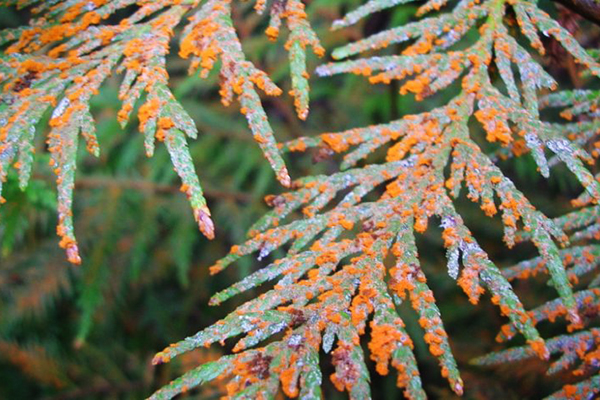
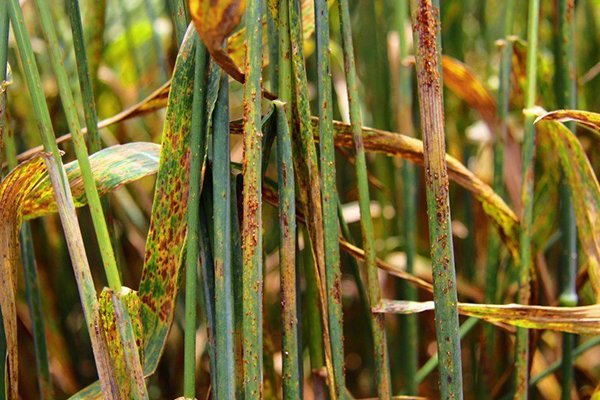
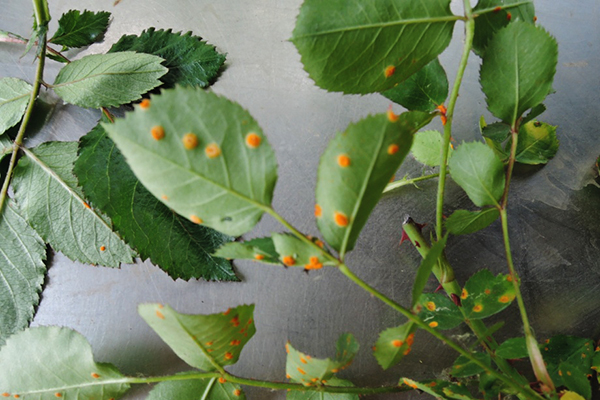
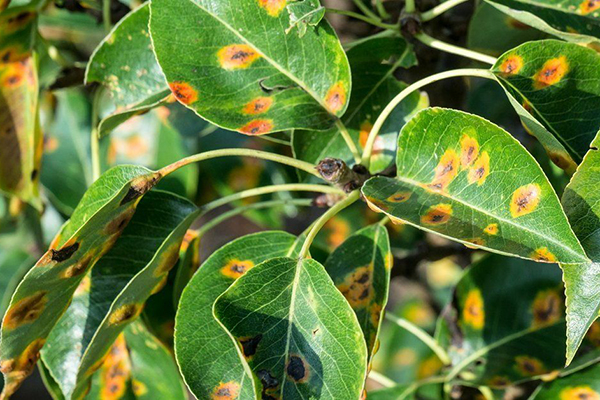
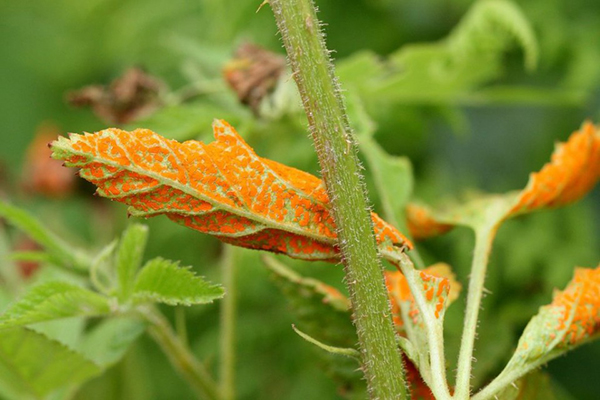
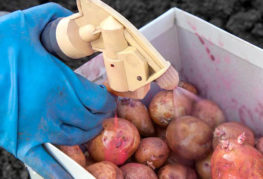
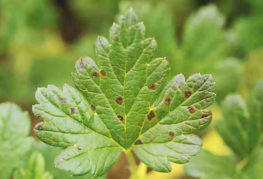
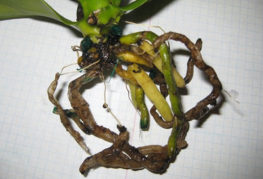
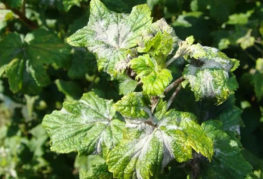

and will be published shortly.